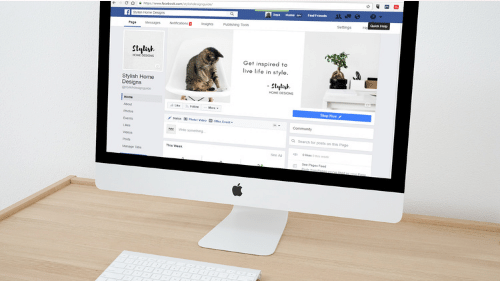Dictionary of marketing, advertising and PR terms. The most interesting and unknown terms in the field of marketing, PR, advertising. Our dictionary will help you understand advertisers, marketers, online product sellers and PR specialists.
- AIDA (Attention, Interest, Desire, Action) - one of the most common models of advertising communication. The abbreviation stands for Attention, Interest, Desire, Action. Proposed by E. Lewis (USA) in 1896.
- Active internet audience [weekly (1+) audience] - those who regularly visit the Internet and spend at least one hour there per week
- Adequate sample - selection for conducting advertising research of such a number of objects or persons, the increase of which would only confirm the data obtained as a result of the research of the sample itself.
- Alliteration - repetition of homogeneous consonant sounds in a phrase, line, or stanza of advertising text.

- Anaphora - a single beginning, a poetic technique in advertising where the same word or sound is repeated at the beginning of two or more speech fragments.
- Competitive analysis - the process of identifying the main competitors, evaluating their goals, strategies, strengths and weaknesses, and the range of likely responses, as well as selecting competitors that should be attacked or avoided.
- Marketing expense analysis - analysis of the cost effectiveness of various marketing factors: assortment groups, implementation methods, sales territories, channel participants, sales staff, advertising media, and consumption types. Marketing expense analysis helps identify effective and ineffective expenditures and make appropriate changes.
- Advertising effectiveness analysis - measuring the degree of advertising impact on the consumer before or after the advertising campaign.
- Annotation - brief information about the subject of advertising, explanations of where the advertising emphasis should be placed.
- Anthropomorphism - in advertising, a method of presenting a product in which it is given human traits. Often used in cases where the individual characteristics of the product are weakly highlighted and the product is little different from its competitors.
- Arbitron - a system for instantly obtaining the rating of a TV program based on data obtained from electronic devices installed in home televisions.
- Audience - the number of listeners/readers/viewers of the considered advertising medium.
- Playbill - a type of print advertising. Unlike a poster, it announces an upcoming event and is posted on the street.
- Customer database - an organized array of comprehensive information about individual (or potential) customers, including geographic, demographic, psychographic characteristics, as well as data on purchasing behavior.

- Banner - 1) a rectangular tablet made of plastic, cardboard or paper, suspended in a store window; 2) an image on a website that leads to an advertiser's website (see also banner network, link)
- Banner network - a system in which for every 100 displays of other people's banners on their site, a member of the BN receives 100 displays of their own banner on other members' sites, minus the commission percentage (which ranges from 10 to 50% depending on the BN) used by the owner of the BN (for promotion of their own projects or for sale).
- Bassorahma - an advertising panel with lighting, installed on the roof of a bus
- Benchmarking - an examination of technology, technological processes and methods of organizing production and product sales at the best partner and competitor enterprises in order to improve the effectiveness of one's own company.
- Biennale - in advertising: a display of something twice a year. In contrast to triennial, i.e. three times a year.
- Billboard - a large board with a 3x6m or 4x10m advertising poster, installed on its own stand.
- Business to Business (B2B) - a sector of the market oriented towards the organization of interaction between companies in the process of production and sale of goods or services.
- Business to Consumer (B2C) - a sector of the market oriented towards working with end consumers of goods or services.
- Business newsletter - a special publication for specialists in a specific market, government officials or civil servants. It allows highlighting and drawing attention to client problems, appearing as experts in the market, lobbying their own interests, increasing the recognition/information about the company and TM.

- Business plan - a detailed plan of entrepreneurial activity for a certain period, establishing the indicators that the enterprise should achieve. For new enterprises, a business plan is a mandatory document that helps mobilize capital or obtain a loan.
- Business portfolio - a set of types of activities and goods that the company is engaged in.
- Box - in printing: part of an advertising text highlighted by a border.
- Brandmauer - brandmower - a hyper-format poster (10x30 m, 15x50 m) attached to a blank wall of a building or structure.
- Brand - a trademark or product with wide recognition. It is positively perceived by the majority of society.
- Branding - the entire system of marketing and PR actions aimed at creating a brand. From an unknown product or company to "well-known by all".
- Booklet - an advertising brochure printed on one sheet and then folded. As a rule, it is distributed free of charge at exhibitions or in the advertiser's office, as well as sent by mail.
- Bul-Mark - advertising of a publishing house, printing house, inserted into a book, magazine, catalog in the form of a colorful bookmark.
- Backgrounder - current event information. This is news that is not a sensation. Such information should be sent regularly to maintain a continuous flow of news coming from the organization.
- Product variation - a modification of a product that is already being produced and on the market by changing its individual properties or quality indicators. Physical (material, quality), aesthetic (design, color, shape), symbolic (product brand name), product properties and related company divisions (customer service, service department, etc.) can be changed. The most important modification strategies can be strategies for improving product quality, increasing product utility, improving the form and style of the product.

- Vector graphics - a graphical representation of an object in the form of a set of vectors (it is completely unsuitable for representing photographs, but very good for layouts, for example, a business card or sign).
- Showcase - a display of goods separated from the consumer by a transparent partition.
- Stained glass - the application of images on glass, acrylic, mirror using various technologies, and their further use in interiors.
- Wobbler - an advertising image that is attached to a shelf or wall on a flexible leg and attracts attention by vibration.
- Peddler - a travelling salesman who advertises and sells goods.
- Secondary marketing information - information that already exists in processed form, such as published materials and databases.
- Sample - a part of the population selected for a marketing study, which should represent the entire population as a whole.
- Selective observation - observation during which not all units of the general population that covers all objects are studied, but only a part of them selected on the basis of certain principles.
- Signboard - a means of outdoor advertising at the point of sale. Usually, it is a flat plaque with an inscription or picture, hanging on the building of a store (cafe, workshop, etc.).
- Pennant - a flag of an advertising character on a stand or for hanging on a wall.
- BTL (Below the Line) - in English, it means "below the line", referring to indirect advertising, which affects consumers differently from direct advertising, which is called ATL (Above the Line - "above the line").
- Banner - a flag of an advertising character on a stand or for hanging on a wall.

- Typeface - the appearance and design of a font.
- Population - all the people about whom conclusions are drawn based on sociological surveys. The description of the population includes the basic age, gender, and other sociological characteristics relevant to the given study.
- Global marketing - marketing based on the integration or standardization of marketing activities in different geographical markets.
- Graverton - a special technology for creating line images with a "golden" coating on metal bases. Plaques made using the "graverton" technology are intended for the decoration of offices, souvenirs, and other things.
- Slogan — expression of an advertising idea.
- Tasting — a type of consumer promotion aimed at familiarizing the target audience with the taste and properties of a brand, as well as initiating a trial purchase. Types of tastings include direct (involving trying the prepared product) and dry (without trying the product, only providing information about the brand, its usage, and distinctive features, conducted only in the place of sale).

- Demographic characteristics — necessary indicators when preparing advertising programs, marketing research, aimed at certain markets or their individual segments. These descriptions include the following characteristics: gender, age, marital status, number of children, etc. The concept of sociological characteristics is broader. See below.
- Demography — a section of modern applied sociology that studies public opinion through surveys.
- Dumping — selling a product at prices significantly lower than the average market level, the so-called "throwaway prices," sometimes below cost. In many Western countries, anti-dumping legislation is in place, which protects the profits of national manufacturers and often hinders the import of goods from other countries offered at reduced prices due to insufficient competitiveness.
- Decal (firing) — a decorative multicolored coating (artistic picture) that is applied to porcelain, ceramics, faience, majolica, glass, and is fused into its surface by firing. Harmless to humans.
- Competitive environment diagnostics — a specific, independent stage of marketing research, necessary for forming a more complete and accurate understanding of the internal motives of competitor behavior.
- Diversification — 1. A type of product strategy in which a company expands the number of products produced. 2. Simultaneous expansion and development of two or more unrelated types of production to conquer new markets and gain additional profit. Horizontal, vertical, and hidden diversification strategies are used.

- Horizontal diversification - adding new products to a company's lineup that are not related to the currently produced ones, but may be of interest to the existing customer base.
- Concentric diversification - adding new products to the lineup that are technically or marketing-wise similar to the existing products of the company.
- Design - artistic creation of original book, magazine, newspaper, and leaflet publications, packaging and labeling products, as well as cultural and household goods.
- Dispenser - a promotional mini-billboard with a voluminous pocket for informational materials (leaflets, business cards, etc.).
- Direct mail - advertising sent by mail (or courier delivery service) directly to consumers potentially interested in doing business with the company or its products.
- Dodger - advertising brochure.
- Market capacity - in marketing, the total payment-capable demand of buyers, the possible annual sales volume of a certain type of product at the established price level. It depends on the degree of saturation of the market, demand elasticity, changes in economic conditions, price levels, product quality, and advertising costs.
- Galon - an advertising carrier at the point of sale. It is a flat or three-dimensional cardboard or plastic advertising carrier in the form of the promoted product.

- Product life cycle - a certain period (cycle) of time reflecting the main stages of product development from its design to withdrawal from the market; the seller's (producer's) profit level at each stage (phase) of the cycle directly depends on it. In the process of product sales and profit acquisition, five stages are usually distinguished: product development (pre-market), product introduction (launch) on the market, sales volume growth stage, maturity (saturation) stage, and sales decline or product elimination from the market stage.
- Magazine - one of the means of advertising in the press. It differs in relatively high print quality.
- Trademark - registered simultaneously with the verbal trademark and used to protect it from counterfeiting. For example, for the well-known trademark ADIDAS, protective marks such as ABIBAS, ADIBAS, AIDAS, ADIDA, etc. could be registered.
- Protective pause - the minimum time interval that should be between advertisements of competing companies. In international practice, the protective pause can reach up to 15 minutes. In domestic practice, due to the insufficient legal framework, the concept of a protective pause is absent.
- Badge - a commemorative sign or certificate of belonging to a particular organization (community, club) in the form of a plastic of various shapes (made of metal, plastic, dense fabric) with a device for attaching to the upper part of clothing.

- Isography - the exact reproduction of any manuscripts, handwriting, etc. Used as an artistic technique in graphic advertising.
- Image - the image of a product, similarity, reflection, representation of something. A socio-psychological phenomenon closely related to the economics of the commodity market. The image of a product is associated with the reputation of the product, its brand, the manufacturer's enterprise, and the country of origin.
- Image advertising - advertising whose main goal is to ensure the popularity of a brand, trade name, or name of a specific person (usually in political advertising) with a future perspective.
- Inversion - turning over. Rearrangement of words in a sentence to emphasize the meaning of the word "moved forward."
- Innovation - an idea, product, or technology launched in production and presented on the market, which the consumer perceives as completely new or possessing some unique properties.
- Marketing information technology - 1. Means of increasing the efficiency of developing, creating, and using marketing technologies. 2. A set of tools and methods that represent a holistic technological system designed to ensure the effectiveness of planning, organizing, and managing the marketing process at one or another hierarchical level of the economy due to the cumulative effect of integrating and interacting elements of information technology, such as computer complexes, computer networks, intelligent terminals, a set of tools and methods for organizing data arrays, encoding and searching for information, etc.
- Cartouche - a graphic decoration. Most often in the form of a shield, panel, tablet, onto which the advertising text and decorative elements are placed.
- Catalog - a publication or website containing a systematized set of links to other sites.

- Cutter - cutting plotter. Advantages: designed for cutting vinyl films as well as for drafting.
- Product quality - a set of product properties that determine its ability to meet specific consumer needs and comply with the required standards. In sales contracts, the parties agree on quality indicators, the procedure for checking it, submitting documents certifying the conformity of the quality of the delivered goods to the agreed requirements, in necessary cases, conditions for acceptance of the goods by quality, as well as the provision of guarantees for quality and the expiration dates or storage of the goods.
- Qualitative research - search research conducted to identify the motivations, reactions and behavior of consumers. Focus groups, interviews and the stable matrix method are methods used in this research.
- Quality ratings - numerical characteristics of the audience that describe not only the volume of the audience, but also its reactions, interest, and attention to the program or channel being considered.
- Point size - a conditional font size, the distance from the bottom of the lowercase letter p to the top of the capital letter R. Measured in points (one point equals 0.35 mm).

- Click - a mouse click on a banner, as well as any other mouse click on a link, button on the screen, etc.
- Promotion mix - a specific combination of advertising, personal selling, sales promotion and public relations activities used by a company to achieve its advertising and marketing goals.
- Commercial traveler - a traveling representative of a trading company. Often acts as a simple intermediary or acts on behalf of his client. Usually provided with product samples, advertising materials and documents. Receives remuneration from his clients in proportion to the volume and effectiveness of sales made with his assistance.
- Communications policy - 1. A prospective course of action of an enterprise and its justifiable strategy for using a complex of communication tools (communication mix) and organizing interaction with all subjects of the marketing system that ensures stable and effective activity to create demand and promote goods and services to the market in order to meet customer needs and generate profits. 2. Development of a complex of incentives, i.e. activities to ensure effective interaction of business partners, organization of advertising, sales promotion methods, public relations, and personal selling.
- Internet audience communication environment - consists of the population that does not use the Internet but has friends among those who regularly visit the Internet. Assessments of the Internet audience communication environment make it possible to understand the scale of the influence of the Runet audience on the rest of the country's population through friendly connections.
- Communicator - a person, group of people, or organization from which information directly originates in the communication process.
- Compendium - a concise statement of the main points.
- Integrated Marketing Communications (IMC) - multi-dimensional advertising activity that includes advertising in mass media, public relations events, sales promotion, and direct marketing, supporting materials and events.

- Product Competitiveness - 1. A combination of qualitative and cost characteristics of a product that ensure its advantage over competitor products in satisfying a specific need. 2. The ability of a product to be the first purchased among competing products in the market. 3. The ratio of the useful effect of consumption (use) of the product to the costs of its acquisition and operation (consumption price).
- Competition - 1. Competition in any area between individual persons interested in achieving the same goal for themselves, in particular, between entrepreneurs - for a larger share of profit, for sales markets, for sources of raw materials. 2. An economic process of interaction, interdependence, and struggle, communications of subjects of the market system in the process of creating, selling, and consuming material and spiritual goods.
- Market Competitive Map - the distribution of market shares of competitors that allows controlling the position (leader, outsider) of a competitor (or one's own company) in the market. It is determined based on an analysis of competitors' market positions in specific product markets.
- Competitive Advantage - an advantage gained by a company over competitors by offering consumers more value, or by offering goods and services at lower prices compared to competitors, or by providing consumers with greater benefits that sufficiently compensate for higher prices for goods and services.
- Consulting - advising manufacturers, sellers, and buyers in the field of technological, technical, and expert activities. Research and forecasting of the market, the development of marketing programs, etc., are provided by specialized consulting companies.
- Advertising campaign concept - a general idea that includes the advertising idea, advertising arguments, features of advertising messages, justification of the choice of advertising media, the type and logic of the advertising campaign with the marketing objectives of the advertiser taken into account.

- Consumerism - a movement in defense of consumer interests. Implemented in the formation of communities, public speeches, boycotts of firms, stores, etc. The development of this movement has led to an increase in the degree of self-control in advertising, taking into account the protection of consumer rights in all advertising activities.
- Trademark counterfeiting - the use of a trademark without the consent of its owner.
- Counter-advertising from a legal point of view - the refutation of improper advertising disseminated for the purpose of eliminating the consequences caused by it.
- Cooperative advertising - advertising jointly paid for by the manufacturer and its sales agents, i.e. between dealers and the manufacturer. Advertising financed jointly by several advertisers - national, local, etc.
- Copywriter - a specialist in creating advertising slogans, texts, and commissioned articles that directly or indirectly carry advertising content.
- Corporate advertising - advertising that creates a need not for a specific brand of goods, but for the entire range of goods.
- Corrective advertising - emerged in response to consumerism and dishonest advertising. Implemented by publicizing informational messages on behalf of controlling bodies that deal with consumer protection. They report inaccuracies and misinformation contained in advertiser materials. It is particularly widely used in the United States and Scandinavian countries, where corrective advertising is paid for by the guilty parties.
- Corrective announcement - an announcement placed after an error in advertising that caused misinformation about the advertised product or company. Advertising contracts with advertising agencies include clauses on the publication of corrective announcements.
- Cross-promotion - joint promotions.
- Roof installation - exclusive image structures located on the roofs of buildings. Often created using neon and internal lighting. The height of the installation is usually 1-5 m, and the length depends on the content of the advertising message. Advantages: one of the most prestigious types of advertising. Placing a roof installation allows the advertising company to declare itself as a successful firm that plans to be present in the market for a long time.

- Lightbox - an advertising billboard with internal lighting measuring 1.2 x 1.8 m. It is attached to columns, stationary structures such as kiosks and the sides of buildings.
- Leafleting - distribution of leaflets with advertising messages in places where the target audience gathers.
- Direct marketing - any active activity to involve potential and actual customers in communication and obtain feedback and information about their desires, needs, interests, with a focus on long-term relationships. Direct marketing includes identifying prospective buyers and personally meeting with them, regular individual communication, and identifying opinions on improved and new products.
- Logo - an original representation of the advertiser's name used as a symbol for a product or company, often serving as a trademark.
- Slogan - a clear, concise formulation of the advertising idea, convenient for perception and memorization.
- Local promotions - promotions tied to a specific place and type of activity. For example, hosting parties in nightclubs, promoting brand in restaurants, participating in youth contests and discos, etc. It is possible to participate as organizers of your own promotions or sponsorship of existing ones.
- Marquises - advertising carriers in the form of awnings on a soft or hard base with information about the company or a movable awning outside the windows to protect from the sun. Advantages: see "signboard".
- Maximum internet audience - all visitors to the Internet, including those who have had at least one experience of visiting the Internet.
- Brand - a name, term, sign, symbol, drawing, or their combination that identifies goods or services of one or several producers - a manufacturer's brand, as well as sellers - a trade mark, and distinguishes them from competing goods and services.
- Marketing as a market activity - organization and management of the process of identifying, taking into account, and satisfying the requirements and desires of consumers with profit for their firm.
- Marketing tasks - strategic tasks related to the development of the firm and the sale of goods. Such as planning of the product assortment, sales and trade operations, pricing, organizing advertising, stimulating sales and distributing goods, their storage and transportation, managing commercial personnel, conducting service, etc. The main goal is to create conditions for adapting production to the demand of consumers and the requirements of the market, to develop a system of measures that ensure the promotion of the product from the manufacturer to the end consumer.
- Marketing research is the systematic and objective collection and analysis of information related to the sale of products and provision of services. Conducting research increases the likelihood of implementing the most effective marketing actions. Research is often undertaken in response to an existing problem, although marketing information can also be used as a basis for prospective planning.

- Marketing logistics is the activity of planning, executing, and controlling the physical movement of materials, finished goods, and related information from the place of production to the place of consumption in order to satisfy consumer needs and obtain profits.
- Marketing potential is 1. An integral part of a company's potential. 2. The collective ability of a marketing system (enterprise) to ensure the constant competitiveness of the enterprise, the economic and social environment of its product or service on the market through planning and conducting effective marketing activities in the areas of demand research, product, price, communication, and sales policy, as well as organizing strategic planning and monitoring the behavior of the product, competitors, and consumers in the market.
- Marketing statistics is 1. The field of statistics that studies the state and dynamics of the market and market relations at different hierarchical levels of entrepreneurial activity. 2. A type of professional activity involving the collection, processing, and analysis of data on the state and development of marketing systems. 3. A set of data and indicators that characterize the state of the internal and external marketing environment.
- Marketing strategy is an element of a company's activity strategy aimed at developing, producing, and delivering to the consumer goods and services that best meet their needs. Marketing strategies can be differentiated into customer attraction strategy and product promotion strategy.
- Marketing decision is one or several alternatives from a multitude of possible options for implementing one or a combination of marketing activities necessary for the sustainable formation, development, and satisfaction of demand for goods or services among consumers.
- Marketing research is a systematic process of setting research goals; identifying volumes; collecting; analyzing objective market information; and developing recommendations for making specific management decisions regarding any element of the firm's market-product strategy and methods for their implementation to achieve final results in the firm's activities in specific marketing environments. Applied research involves conducting specific management research. (2) A type of activity that links the consumer, buyer, and public with the marketer using information to identify and define marketing opportunities and problems, to develop, refine, and evaluate marketing actions, to monitor marketing performance, and to improve understanding of marketing as a process of management.
- Media - 1. Means of advertising dissemination. 2. The entire set of means of audio, video, and visual communication.

- Mentality is a psychological term that speaks to differences in perception, evaluations, and perspectives between people that are conditioned by lifestyle, upbringing, education, and culture. It is taken into account when preparing advertising appeals and arguments for market consumers.
- Merchandising is the display of goods, decoration of showcases, placement of POS materials, and monitoring of competitors' promotions. The placement of goods is carried out in such a way as to place the goods in the best selling place (on shelves at eye and hand level).
- Methods of forecasting in marketing are scientific predictions based on the analysis of factual data of the past and present of the object under study. Short-term forecasts (up to 1.5 years), medium-term forecasts (5 years), and long-term forecasts (10-15 years) are distinguished by the magnitude of the strengthening period based on the system of forecasts of various components. Forecasts are divided into quantitative and qualitative by the form of presentation, and into general and private by the coverage of the research object.
- Methods of pricing are methods used in forming prices for products and services. Three pricing methods are distinguished - cost-based, buyer line-based, and competitor-based.
- Module is a graphic advertisement of a certain size for publication in the press.
- Mobile is a lightweight (plastic, cardboard) advertising structure (flat - double-sided billboard, suspended from the ceiling; composite - structures suspended from each other, volumetric - three-dimensional structure assembled in the form of boxes or other structures) hung from the ceiling or bracket. Advantages: because the space above people's heads is usually not filled with advertising, the billboard attracts additional attention.
- Press monitoring/analysis - a continuous study of the press to identify the activity of competitors and the client, as well as to review the market. It allows for prompt and timely response to the current situation and to obtain maximum information about competitors.
- Motto - a certain size graphic advertisement for publication in the press.
- Motivation - 1. The process of intensifying the motives of an individual or their group with the aim of activating their actions to satisfy a certain need. 2. Influential actions that affect the buyer's activity in the process of making a purchase decision.
- Roof installations - advertising structures in the form of logos of leading companies placed on administrative or residential buildings at the maximum viewing angle of the installation.
- Sticker - a small form of printing, produced on a self-adhesive basis.
- Outdoor advertising - advertising on the streets (billboards, banners, etc.), on the facade of the advertiser's building (shop window, canopy, etc.), as well as on transport and in the metro.
- Internet weekly (n+) audience - those who regularly visit the Internet and spend at least n hours a week there.
- Improper advertising from a legal perspective - dishonest, unreliable, unethical, deliberately false, and other advertising in which violations of the requirements for its content, time, place, and method of distribution established by law are made.
- Nonpareil - a small typographic font (2.25 mm).

- Round-up articles - articles that integrate the experience of several companies in the industry. They can be initiated both by publications themselves and by PR specialists. The publicity of smaller and weaker companies may improve as a result of including materials about them in a round-up article along with materials about larger and stronger competitors.
- Volume trademark - an element of corporate identity, a trademark in volumetric execution. For example, the "Coca-Cola" bottle. It can be registered on general grounds.
- Offer - a commercial, advertising, or trade appeal.
- Offset - the most common type of printing, especially cost-effective for large print runs.
- Coverage — the number of representatives of the target audience who have come into contact with a specific advertising medium or combination of communication tools during a certain period of time.
- Pantone — one of the systems for standardizing colors, proposed by the company of the same name. Using the table, you can choose any of the 14 basic and more than 1000 composite colors, obtained from the basics using formulas. The catalog presents colors for 2 main types of paper - coated and offset. A common term is color by Pantone. Advantages: allows you to not depend on the subtleties of color separation and accurately choose the desired color.
- Public Relations or PR — communicative activity (including indirect advertising) aimed at forming harmonious relationships with society, usually openly paid and used as a complement to advertising, carried out with the aim of informing the public about the company, its products, gaining trust and forming a favorable image.
- Publicity — popularization, creating awareness. Actions aimed at attracting attention.
- Party-Plant — one of the sales promotion tools. Organizing a product demonstration at home during a specially arranged reception for guests.
- Patent Attorney — a representative of the applicant registered with the Patent Office and entrusted with the management of matters related to the registration of trademarks. The authority of the patent attorney is certified by a notarized power of attorney.
- Primary Marketing Information — information specifically collected by the company or specialized marketing organization for making specific management decisions in the field of marketing strategy.
- Periodicals — publications that come out with a certain periodicity: newspapers, magazines, etc.
- Petit — small typographic font (3 mm).
- Pixel — the smallest unit of a graphic image in raster graphics.
- Pylon — a standalone advertising structure (stella). Advantages: Image structure.
- Poster — a colorful advertising publication of a large format.
- Signature — text added to the end of each outgoing email, set by the user in the email program. It contains the full name, position, place of work, and other information about the sender.
- Product positioning in the market — formulation of a marketing complex that has selective attractiveness for the chosen segment(s) and the determination of the brand's place in the minds of consumers. Positioning can be based on product features, benefits, purchasing and service usage opportunities, types of users, or comparisons with competitors.

- Search engine — 1) a specialized website where links to websites that match specific keywords can be obtained; 2) a computer that searches for new websites and indexes them by keywords for subsequent quick delivery of a list of links to keyword queries.
- Advertising audience from a legal point of view — legal or natural persons who are made aware of or may be made aware of advertising, as a result of which advertising may or may not have an impact on them.
- Product positioning in the market — formulation of a marketing complex that has selective attractiveness for the chosen segment(s) and the determination of the brand's place in the minds of consumers. Positioning can be based on product features, benefits, purchasing and service usage opportunities, types of users, or comparisons with competitors.
- Advertising program — a program of advertising activities for a certain period of time, formed taking into account the strategic and tactical objectives of the company, indicating the target audience, types, and means of advertising.
- Presentation — an advertising event that includes a product demonstration and a theatrical (musical) performance, as well as a reception (lunch, dinner, etc.)
- Press release — a public relations tool, an information bulletin intended for newspapers, magazines, radio, and TV editors, from which they can obtain the information they are interested in. The peculiarity is the free publication due to the news nature of the message.
- Press relations (Press-Relations) — establishment and maintenance of contacts with the press to ensure editorial coverage of the company's activities, presentation of its products.
- Premiums — promotion of a product through special trade offers ("buy three bottles, get the fourth one free!" or "buy two packages, get a company souvenir prize" etc.)
- Prismatron — an improved version of a billboard. Rotating triangular prisms allow three advertising images to be displayed on such a board (image change every 20-30 seconds).
- Promotion — assistance in sales, distribution, and implementation of events that influence the end consumer.
- Consumer profile — socio-demographic and behavioral characteristics of potential buyers.
- Regular internet audience — all internet users except those who have had a single experience of visiting the internet or have been online only once or a few times in the last three months.
- Advertising, from a legal standpoint, is any information in any form disseminated through any means about a physical or legal entity, goods, ideas, and undertakings (advertising information) that is intended for an indefinite number of persons and is aimed at shaping or maintaining an interest in these physical or legal entities, goods, ideas, and undertakings and promoting the sale of goods, ideas, and undertakings.
- Advertising audience — all individuals who can read, see, or hear an advertising message delivered by a specific source of information.
- Advertising activity — the organization and management of the process of planning, creating, producing, delivering advertising messages to the target audience and monitoring the effectiveness of advertising activities.
- Advertising campaign — a complex of advertising activities carried out in accordance with a single goal and concept.

- Advertising pyramid — a combination of the main types of consumer audiences, their willingness to buy the advertised product. As their readiness increases, the following stages are distinguished: unawareness, awareness, knowledge, liking, preference, purchase, repurchase.
- Advertising strategy — a large-scale long-term program aimed at achieving the most important advertising goal. Developing an advertising strategy involves determining the following elements: target audience; product concept; mass media and/or advertising media used to deliver advertising appeals; development of advertising appeals.
- Advertiser, from a legal standpoint, is a legal or natural person who is the source of advertising information for the production, placement, and subsequent distribution of advertising.
- Advertising producer, from a legal standpoint, is a legal or natural person who carries out complete or partial preparation of advertising information for distribution.
- Advertising distributor, from a legal standpoint, is a legal or natural person who places and/or disseminates advertising information by providing and/or using property, including broadcasting and television broadcasting equipment, as well as communication channels, airtime, and other means.
- Representative sample - a sociological term. A sample of people from a population that allows the data of the survey of the representative sample to be transferred to the population with a high degree of reliability of about 4-5%. It is characterized by the same percentage composition of the main sociological characteristics (gender, age, social and family status, etc.) as the population.
- Reprint - a repeated edition.
- Reference group - in psychology: a group in which an individual would like to be, with a lifestyle, values, manners, and fashion that he or she approves of and strives to imitate.

- Point of Sales (POS) - places of sale (stores, supermarkets, markets, etc.).
- Market segmentation - dividing the market into clear groups of buyers, each of which may require separate products and/or marketing complexes. Market segmentation can be based on geographic, demographic, psychographic, and behavioral characteristics.
- Sales Promotion - direct stimulation of sales. In the broadest sense, it represents all kinds of activities related to providing information, including commercial advertising, about a product or service, its characteristics, degree of compliance with consumer conscious demands, as well as all kinds of marketing communications.
- Situation analysis - one of the stages of marketing planning. It represents a thorough analysis of the internal and overall marketing environment of the firm, as a result of which its strengths and weaknesses, dangers and additional opportunities that the firm may expect as a result of one or another course of events in the external marketing environment are determined. The result of the situation analysis may be the firm's choice of one of the alternative strategies for its development: growth, downsizing, or consolidation.
- Sitelight - an advertising structure of 1.2 x 1.8m. It is attached to its own stand.
- Slogan - an advertising slogan: a clear, concise and compressed formulation of an advertising idea that is easily perceived and remembered.
- Hidden advertising - a general name for materials in the press and artistic works containing positive, commercially important information for a particular firm.
- Related materials and events in advertising activities are additional means for companies to solve various marketing tasks. They are used in proper selling, public relations events, and sales promotion. These include printed products such as leaflets, booklets, brochures, postcards, etc., as well as films, trade shows, portable devices for product samples, annual reports, and point-of-sale design.
- Event marketing is the organization of mass entertainment events such as festivals, parties, etc. that are usually tied to specific dates.
- Mass media refers to newspapers, magazines, radio, and television.
- A spot is a short advertising message or commercial inserted between TV or radio programs, with a duration of 10 to 60 seconds.
- Demand is a category inherent in the commodity economy and manifested in the sphere of exchange and trade. It expresses the constantly changing aggregate social need represented in the market in various goods, formed from a multitude of specific requirements of mass consumers that vary greatly.
- CRM (Customer Relationships Marketing) is a set of measures aimed at eliciting a response from consumers and establishing a long-term relationship with them based on an individual approach to each customer. The main goal of direct marketing is not only to engage in a dialogue with the consumer, but also to monitor the market, study consumer characteristics and abilities, and identify potential customers.
- Lifestyle refers to the habits, peculiarities of life and behavior of people that form certain groups in the population.
- A sticker is a label with the logo of a company or brand that can be placed at the entrance along with additional inscriptions, such as "Welcome".
- Sales promotion is a short-term incentive measure to encourage the purchase or sale of a product/service. It is implemented both towards the consumer (consumer promotion) and towards the trade network (trade promotion).
- Trade promotion refers to various means of influencing and stimulating the sale of a product by activating the work of the supply chain. It includes both economic methods of influence, such as contests and incentives for sellers, as well as non-economic methods, such as informing wholesale and retail sellers about the product, point-of-sale design, and placement of POS materials.
- Consumer promotion - various means of influencing and stimulating consumer demand and sales of a product, including economic incentives such as sampling, testing, coupons, discounts, giveaways, games, contests, and prizes.
- Sandwich man - a person walking around the streets with two advertising boards on their chest and back.
- Sampling - the distribution of product samples and advertising materials through the free distribution of samples or advertising materials in retail locations, busy streets, clubs, concerts and show events, as well as other places where the target audience is gathered.
- Market targeting - the evaluation of each market segment and the selection of one or more segments to serve in order to choose the most promising one for focused advertising impact.
- Tabledot - a communal dining table in boarding houses, large cafeterias and restaurants. Often used for advertising products.
- Telemarketing - a form of marketing based on the use of telecommunications and the internet, allowing potential customers to make rapid searches and purchases of goods and services in real and virtual markets.
- Tender - a commercial competition used to select partners. For example, an advertiser announces a competition among several advertising agencies to solve a specific advertising task.
- Testimonial - a form of advertising that uses the authority of a popular personality.
- Product policy - a set of measures and strategies aimed at setting and achieving entrepreneurial goals, including the introduction of a new product or group of products to the market (innovation), modernization of products already on the market (variation), or withdrawal from the production program of a product being produced (elimination), as well as assortment policy.
- Product strategies - 1. The main fundamental directions of the product policy, following which the enterprise can ensure a stable volume of sales and profit at all stages of the product life cycle. Product strategies usually include innovation, variation, elimination of a product or service. 2. Development of directions for optimizing the product range and determining the assortment of goods that create conditions for stable competitiveness and effective company activities.
- Trademark - a word, name, sign, symbol, or combination thereof, artistically designed and used to individualize and distinguish manufacturers, selling organizations, or goods among competitors.

- Trolls - an advertising billboard attached to the overhead lines of trolleybuses, trams, perpendicular to the movement of urban transport.
- Trade Marketing - a complex of measures aimed at increasing the effectiveness of interaction with participants in the distribution chain. Trade marketing considers the market as an opportunity to realize an existing product, "push it to the consumer," make it more accessible to the buyer, and convey information about it in the most accessible way for the consumer.
- TTL (through the line) - a complex of services that combines the use of both direct (ATL) and indirect (BTL) advertising.
- Unique selling proposition - the main feature, characteristic, or property inherent in the advertised object, which distinguishes it advantageously from competitors and is attractive to consumers.
- Corporate style - the unity of constant artistic and textual elements in all advertising developments and advertising media of the company.
- Franchising - contractual partnership between a manufacturer, wholesaler, or service organization and independent businessmen who buy the right to own and manage one or several companies in the franchise system.
- Figurative poster - an advertising billboard of a figurative shape with a folding leg.
- Hard poster - an advertising billboard with a folding leg.
- Color separation - the process of dividing a color image into 4 main (for full-color printing) colors - Cyan, Magenta, Yellow, Black - CMYK.
- Target audience - a specific group of people consisting of potential consumers of the product (buyers and clients) to whom the advertising message is directed.
- Target market - a market selected as a result of studying the markets for a particular product or service, characterized by minimal marketing costs and providing the main share of the company's activity results.
- Price elasticity - a measure of the sensitivity of demand to changes in price.
- The Four Ps of Marketing (4P) - 1- Product - includes the design and development of the product, establishing the brand and packaging; 2- Place - includes the channels used to move the product from the manufacturer to the customer; 3- Price - includes the price at which the product or service is offered for sale and sets the level of profitability; 4- Promotion - includes personal selling, advertising, public relations, sales promotion, direct marketing, as well as information at the point of sale and on the packaging.
- Stand - a separate folding structure (made of plastic, plywood, metal). Usually stands are placed at the entrance to stores, bars, cafes, etc.
- Puppy dog - a personal selling technique based on letting the customer hold the product in their hands or leave it with them for some time. It got its name because it is hard to give up a puppy that you have held in your arms.
- Elasticity of demand - in marketing, the degree of change in one variable for a small relative change in another, for example, a change in demand for exported industrial goods due to a change in exchange rates or a change in demand due to changes in prices. Goods are considered less elastic if changes in prices have little effect on their demand.
- Advertising effectiveness - the degree of influence of advertising on consumers in the interests of the manufacturer or intermediary. It is determined before and after the transmission of advertising appeal. The determination of the impact of advertising on sales results (economic efficiency) is carried out by relatively comparing the costs of advertising and the volume of product sales based on past performance. The accuracy of the latter method is not high, as many other factors besides advertising affect sales results.
- Core audience (weekly (3+) audience) - those who regularly visit the Internet and spend at least three hours there per week.





















